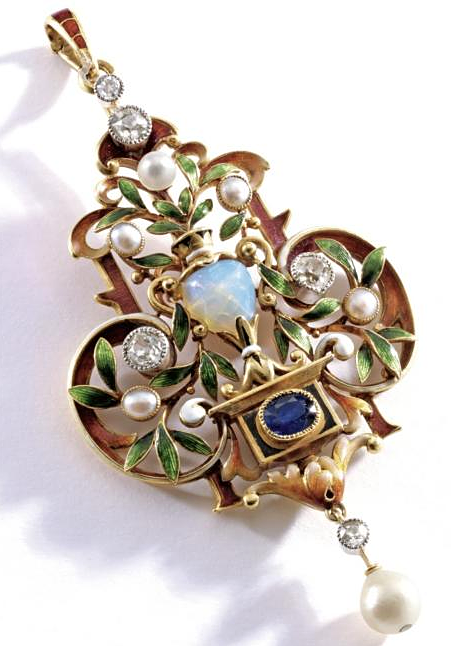
Some stunning Renaissance Revival jewelry is coming up for sale this month, renewing interest – yet again – in that 19th-century style, one of jewelry history’s most beautiful revisitations. Hollywood jeweler Neil Lane probably has his eye on these sales – and one piece in particular.
“I know it sounds silly, but I actually like Renaissance Revival better than the original stuff,” Neil Lane told me once.
While Lane is most famous for bejeweling stars for the red carpet, he also has a world-class personal collection of antique jewelry, including works by Jules Wièse, a French jeweler who specialized in 19th-century revivals.
The piece Lane is probably watching is the Renaissance Revival pendant by Wièse (below) that’s coming up for sale at Sotheby’s New York next week.
Not surprisingly, the most spectacular examples of original Renaissance jewelry are usually in museums or private family collections – if they weren’t broken down and made into other jewelry. But Renaissance rings or earrings do appear at auction at fairly accessible prices – usually small gold and enamel pieces made in Spain, Portugal or Germany and usually at Christies or Sotheby’s London.
For dealers and collectors with $10,000 to spend on a bauble, however, age and provenance are not always enough.
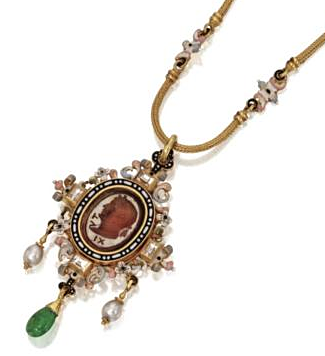
“I appreciate the age of Renaissance jewelry and the difficulty in finding it,” Lane says, “but I prefer revival jewelry because it’s technically pretty. Revival styles are much more sophisticated, more mannered and defined. There’s a schematic to them – especially on the level that Wièse produced.
“When you look at enough of it, you begin to appreciate the technical superiority, the heft of it, the piercing of gold, the enameling and stone-setting – all very sophisticated.”
“A lot of Renaissance jewelry looks a little crude,” Lane explains. “They didn’t have the technical skills or the lapidary tools they had in the 19th century. A lot of stones are native-cut in Renaissance jewelry – cut by locals where they were found in India or Burma. In Paris during the 1880s, the stones were faceted in cutting centers which were more technically advanced. A lot of the jewelry from the Renaissance has little holes in the emeralds.”
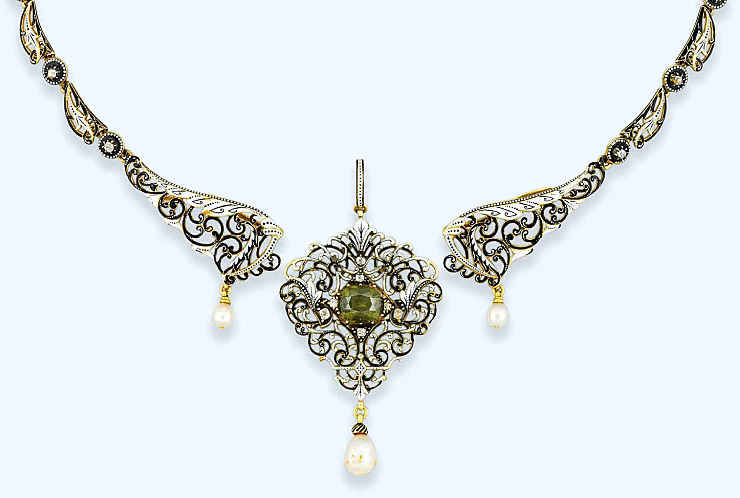
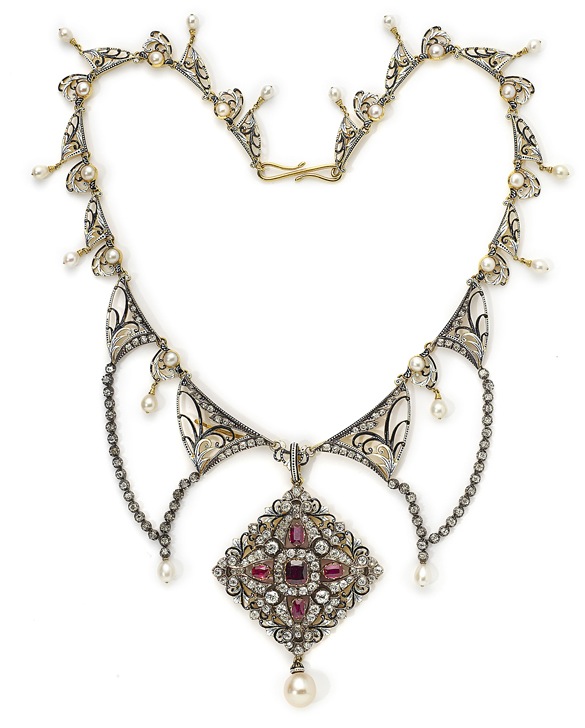
With many revivals, jewelers were looking back not just at jewelry of a particular era but decorative styles and motifs in general, then updating them into wearable jewelry.
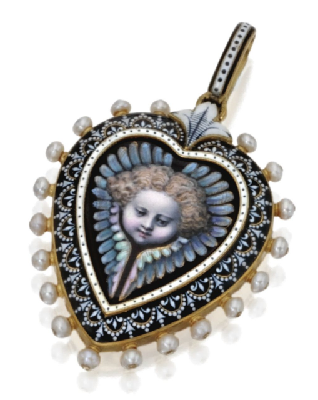
“Most pieces that are clearly Renaissance Revival were obviously done by modern hand, using modern cut stones consistent with the period — more in the inspiration than duplication of actual Renaissance jewelry,” explains Peter Shemonsky, a San Francisco-based jewelry appraiser who frequently appears on the Antiques Road Show.
Renaissance jewelry copying actually began while the originals were being made, due to the advent of the printing press. Jewelers began publishing detailed engravings of their designs in the mid-1500s, which were circulated throughout Europe and freely copied by other jewelers.
Many collectors of revival jewelry, like Lane, avoid the forgery trap by buying within a narrowly-defined category — Giuliano, Castellani, Wièse, French or British neo-Renaissance — with which they become intimately familiar.
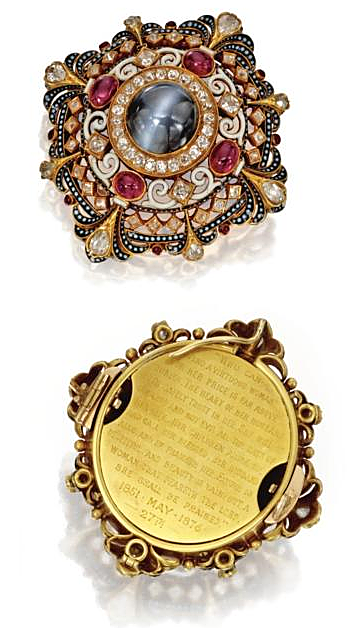
How do you spot a Renaissance forgery? “I always say, style can be copied but craftsmanship can’t – unless someone’s really good,” says Shemonsky. “In today’s market, craftsmanship is so costly, it eclipses the value of a piece.
“If a piece costs $10,000 to reproduce and it only sells for $12,000, there’s no motive to copy it – which is why many pieces we see now that are period-style reproductions were made in Asia and fall part when you look at the back. The style may look right but not the craftsmanship.”
Of course, whenever you pick up a revival piece, there’s always that slim but intoxicating possibility that it could turn out to be an original. “I like the edge of collecting revival jewelry,” Lane says. “Sometimes you’re not sure: Is it ancient or is it 19th century? A lot of 19th-century pieces that we call Renaissance Revival were once bought as originals from the Renaissance.
“We revalue these pieces now in their own right, but there were a lot of forgeries around at one time that only came out later. A lot of the collection at the Met is valued now for being these great interpretations. We see them today and think, how could anyone have confused them for Renaissance? But the people that bought them wanted to believe. Famous workshops collected this stuff for wealthy patrons like the Rothschilds, and they were bought as originals.”
Fortunately for antique jewelry dealers, there is a lot more knowledge available about revival jewelry today. Buyers interested in this category would do well to arm themselves with this information before venturing into the marketplace.
Related posts
What you need to know about jewelry hallmarks
How to buy ancient jewelry for $3000 or less (Ask an Expert: G. Max Bernheimer)
What you need to know about collecting ancient jewels (Ask an Expert: Kenneth Lapatin)
